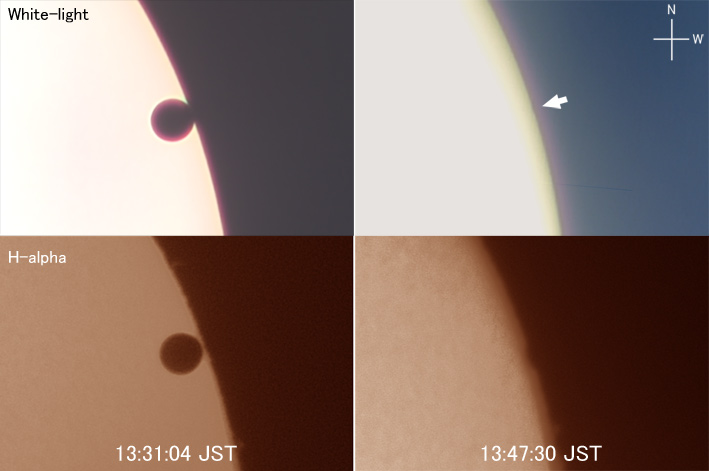
 |
| Date & Time: | Jun 6 2012, Times are displayed in image |
| Optical (upper, white-light): | BORG 45EDII, afocal method with LV25mm eyepiece (Syn. f=793mm) |
| with ND400, ND8 & ND4 filters (timely changed) | |
| (lower: H-alpha): | Coronado SolarMax40, eyepiece projection with Naglar type5 16mm (f=1025mm, F26.0) |
| Auto-guided with TAKAHASHI EM-200 Equatorial | |
| Digital Camera: | Canon iVIS HF M41(white-light), Canon EOS 550D(Remodeled)(H-alpha) |
| Location: | Joetsu city, Niigata pref. |
| Camera Settings (White-light): | Mode...MXP(24Mbps), Aperture Value Manual |
| Lens...f=61mm (equivalent f=436mm in 35mm film format), Stop: F3.0 | |
| 30 JPEG images (for 1sec.) captured each, stacked with Registax5.1 | |
| Camera Settings (H-alpha): | Recording format...14bit CCD-RAW, converted to 16bit TIFF(5184 x 3456) |
| CCD sensitivity...ISO800 |
Venus Transit with H-alpha (Jun 6, 2012) |
Aureole effect of the Venus (Jun 6, 2012) |
| Copyright(c) 2012 by Naoyuki Kurita, All rights reserved. | ||
| To top page | To Moon & Planets index |